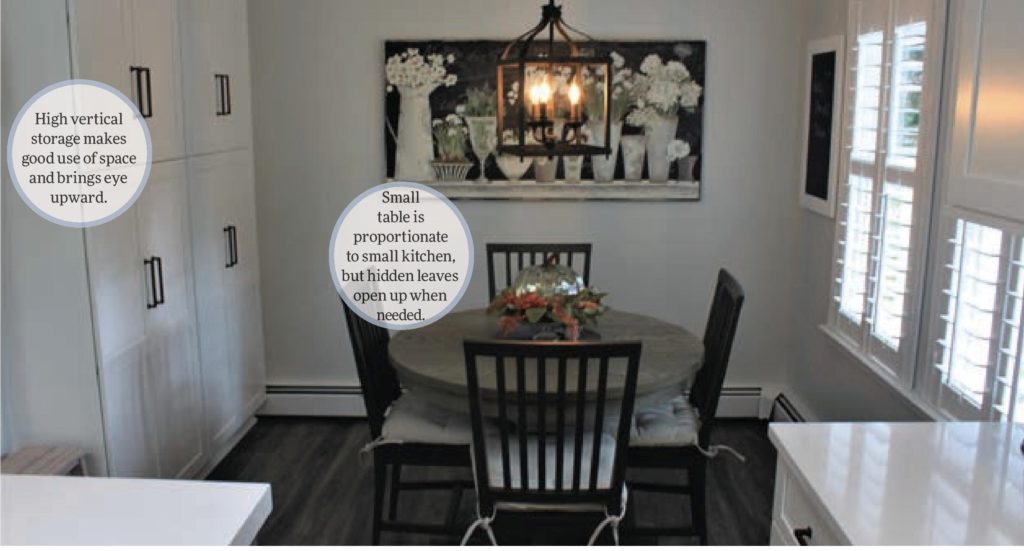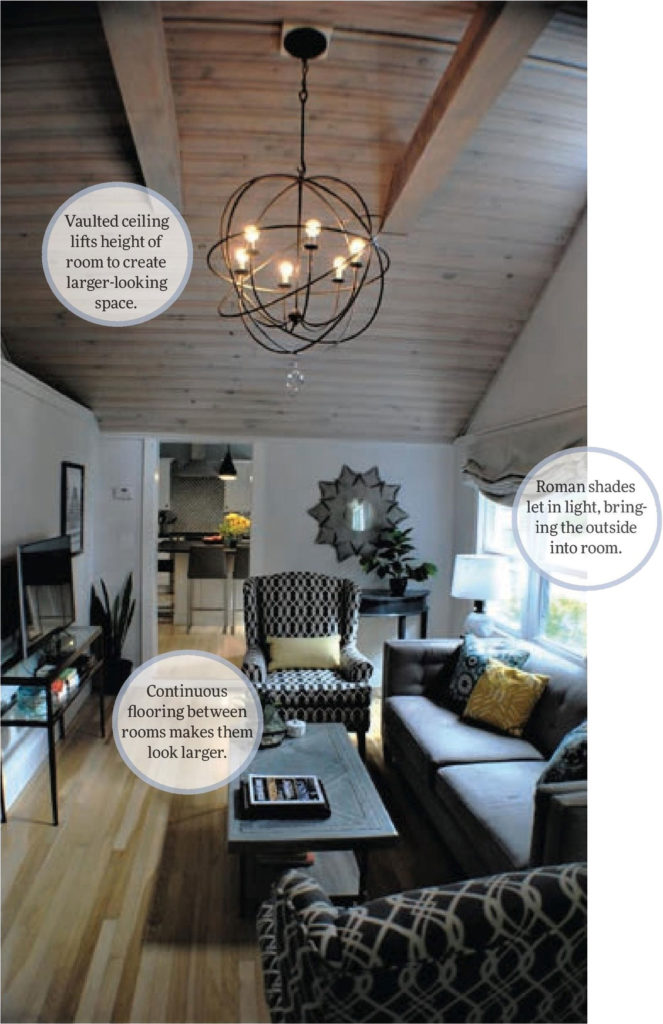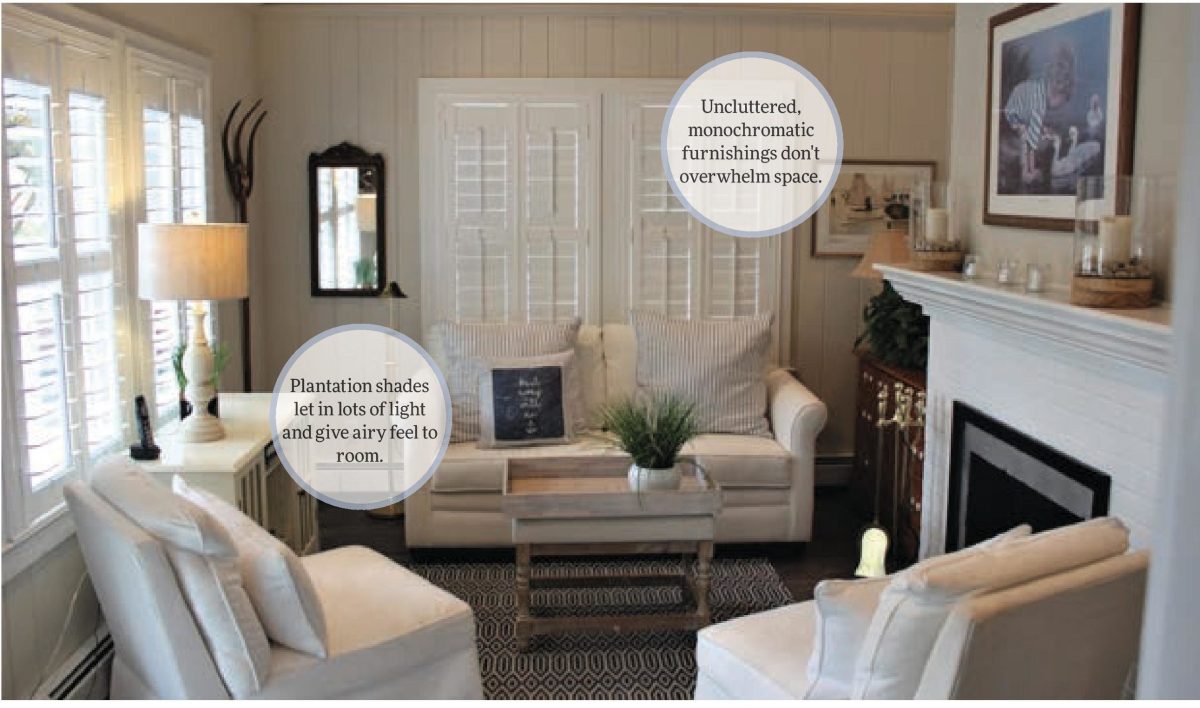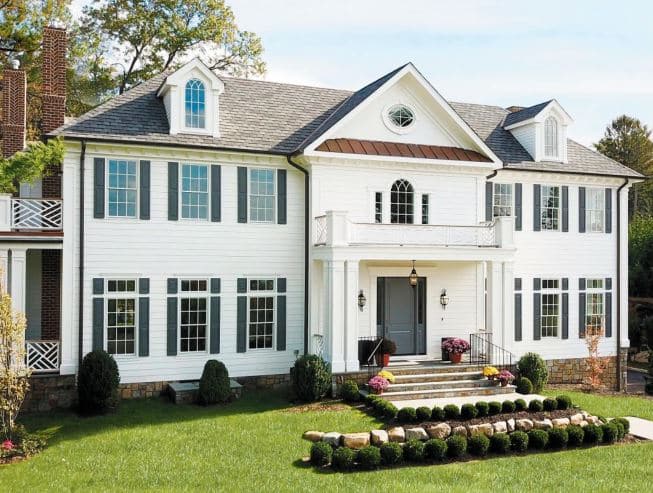As more and more people downsize or move into ever smaller homes, co-ops and condos, they’re faced with the challenge of fitting all their possessions into a more limited space.
The first thing to do in tackling a smaller space is to assess what you plan to put in it and take a closer look at your things, says Donna Sheehan, interior designer and owner of Inner Sense Interiors of Bellport.
“Letting go of some things can lead to gaining others, such as a workable albeit small closet,” she explains.
Keep only the things that you love, advises Ellen Miller, an interior decorator and owner of ElbowrooM: Small Space Solutions, formerly based in Long Beach.
Miller often does an exercise with her clients who live in smaller spaces, asking them to write a love letter to an item they really love, such as a special lamp or vase, and explain exactly why they love it.
“After that, when I say, ‘Every item in your home should give you the same feeling,’ it’s amazing how much they will get rid of,” says Miller.
FUNCTION OVER FORM
Choose furniture that has a multipurpose use, advises Sheehan.
“An ottoman with storage instead of a coffee table, a bed with storage below, or a table with built-in leaves are all space-saving ideas with function in mind,” Sheehan explains.
When you have limited living space, it’s important that you love your things and that they all have functions, concurs Miller. A table should double as a workspace and a mirror on a wall should not just be decorative but cover a cabinet or pantry as well.
Create a focal point for your space, advises Miller.
A brightly colored couch or a bold piece of artwork allows the eye to focus somewhere in the room, rather than notice the size of the space itself, she explains.

VERTICAL SPACE
Utilize wall space right up to the ceiling for vertical storage, advises Miller, explaining that seasonal items can be stored on shelves or cabinets placed over doorways.
Furnishings, such as bookcases and etageres, can both provide storage and serve to bring the eye upward, which creates a sense of a larger space, says Sheehan. If possible, adds Sheehan, open the ceiling with a skylight or vault it, to “create a sense of increasing your square footage.”
LIGHTING
To open up a room, allow as much natural light as possible and avoid heavy drapery, advises Sheehan.
“Window treatments, such as blinds and Roman shades, allow light exposure, while also providing privacy when needed,” she says.
“My rule of thumb is to never use any treatments on your windows if you don’t need them,” says Miller, adding that if nobody can see into your home when you have the lights on at night, then you really don’t need any window covering.”
“I think it’s great to not have any, to allow the outside to extend into the inside,” she says. “And, it will make your space also feel much bigger.”
VISUAL CONTINUITY
Small spaces appear larger when connecting rooms have the same flooring and similar color palettes, especially on the walls, notes Sheehan.
“Avoid chopping up the space and consider how rooms flow, rather than how one room ends and the other begins,” she explains.
Try to have your space tell a story, says Miller. If you love the color blue or Asian art, for example, have at least one Asian art or blue object in each room, which will also create continuity from room to room.




































